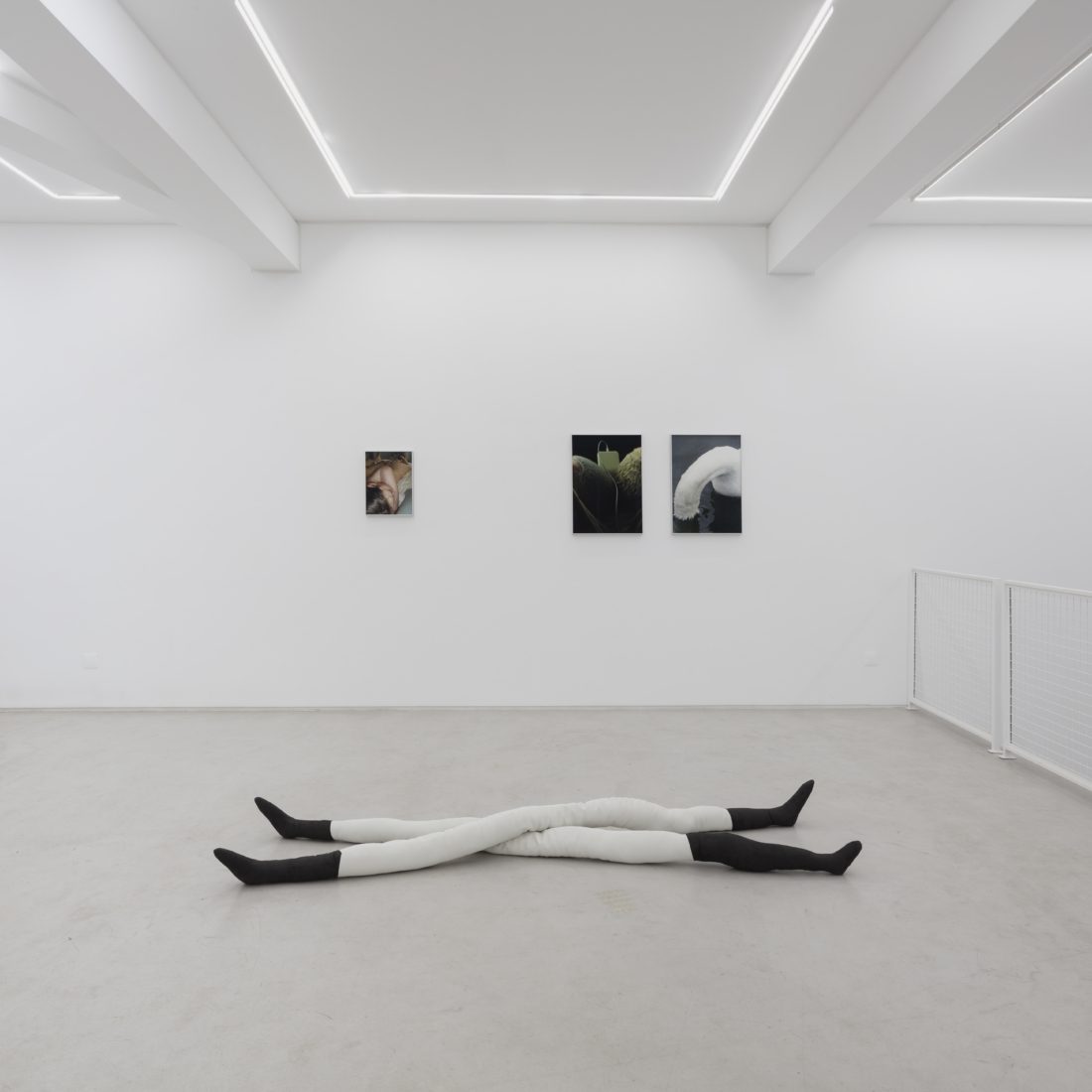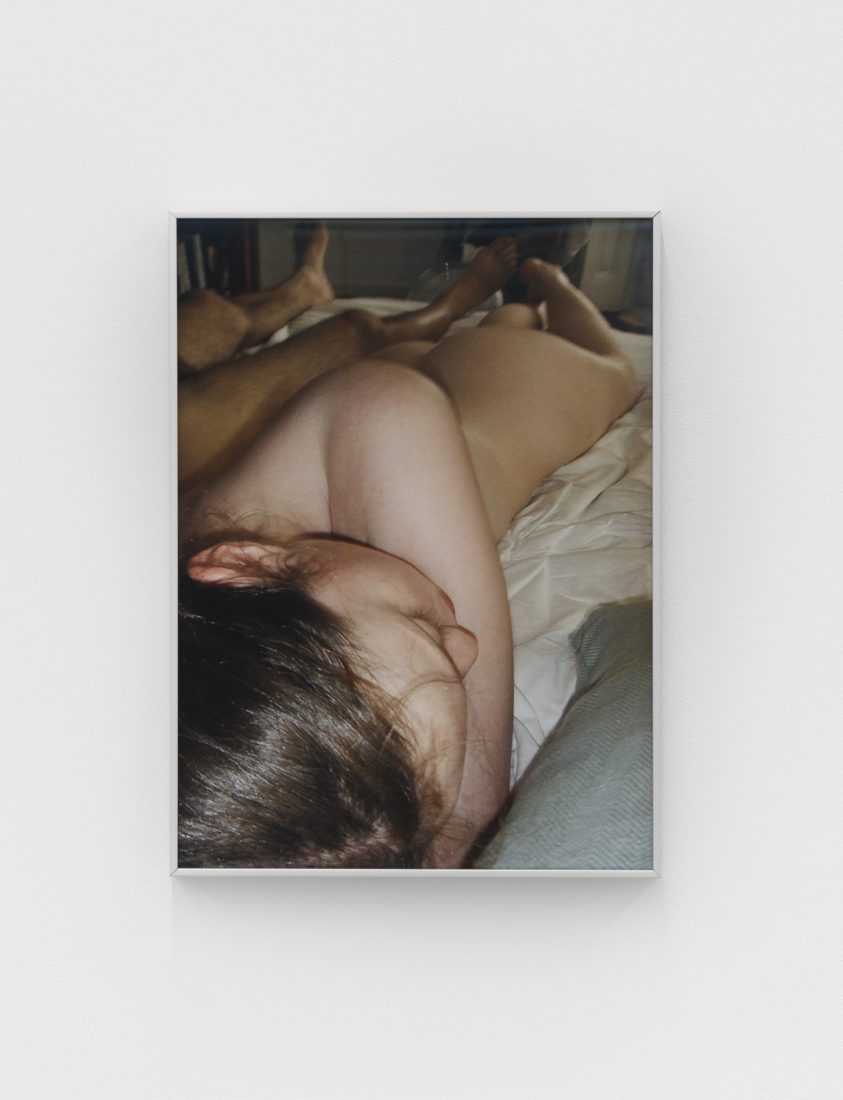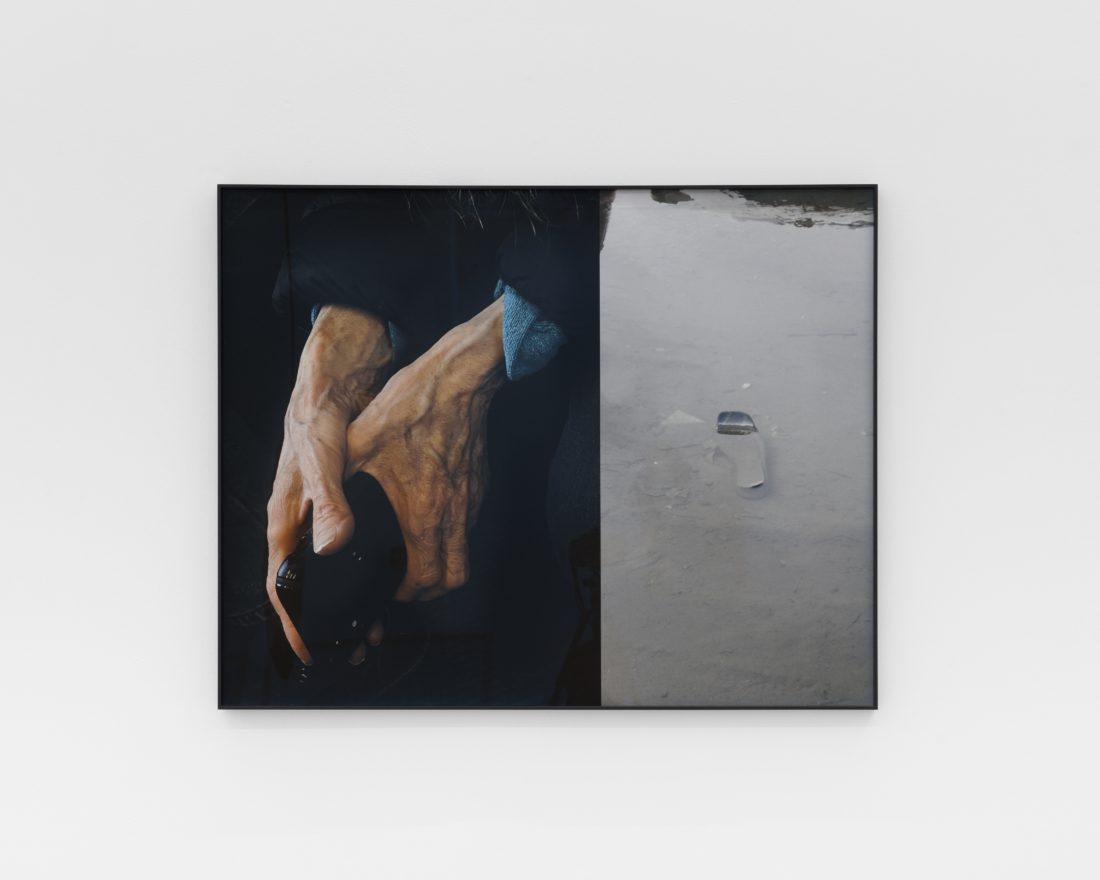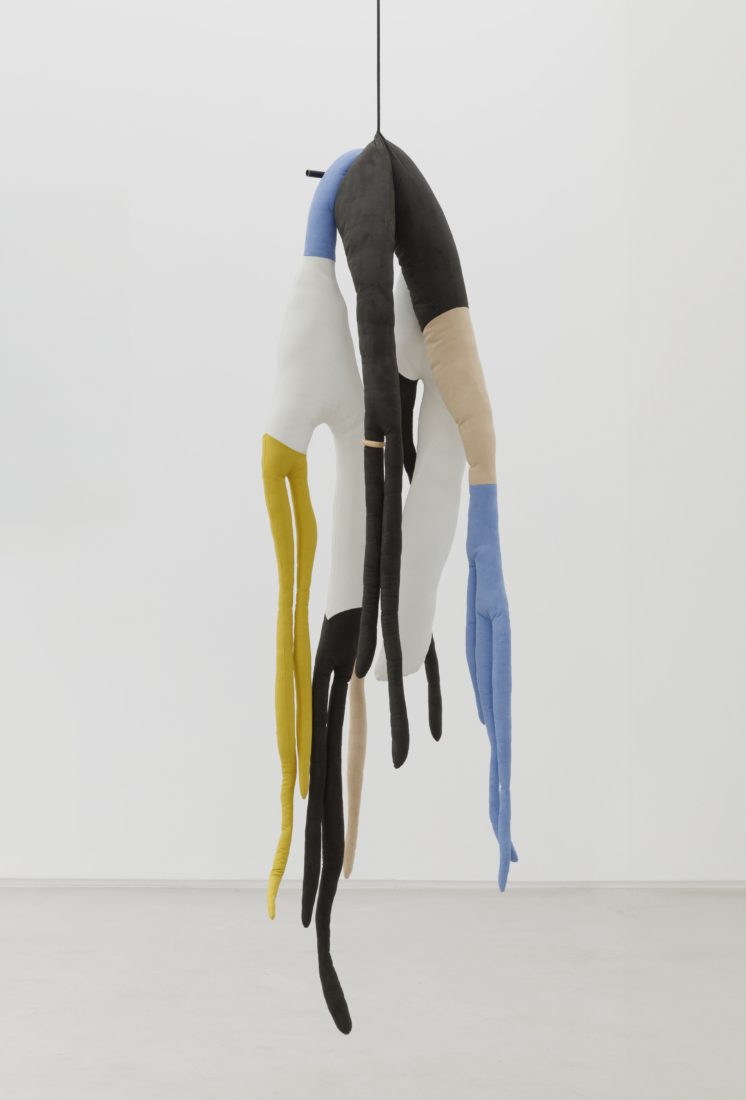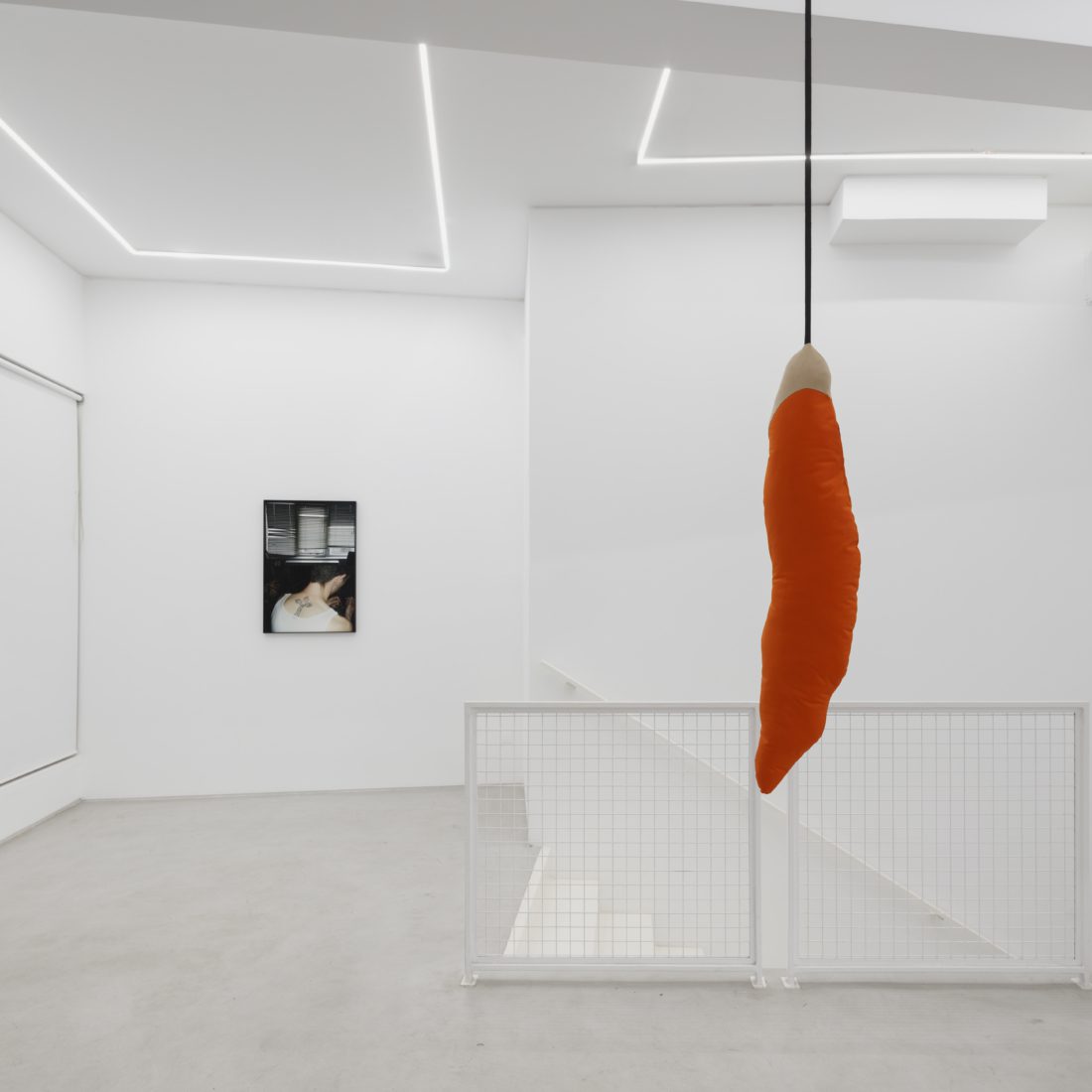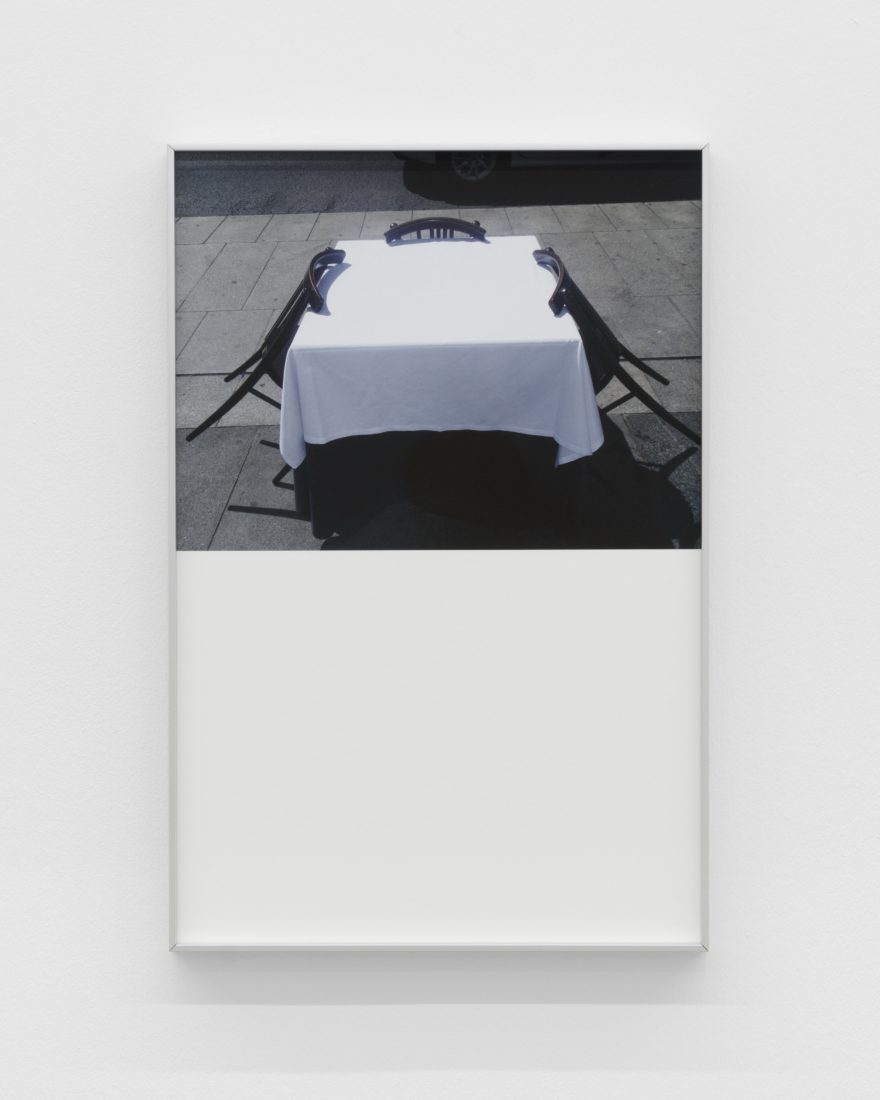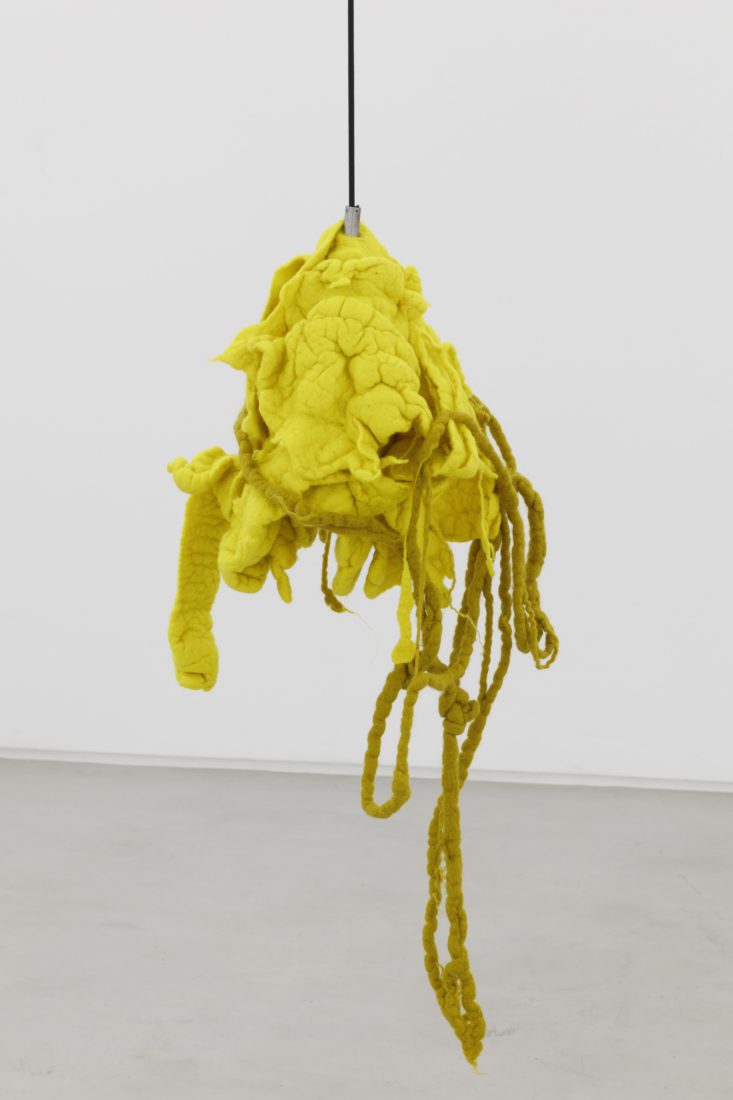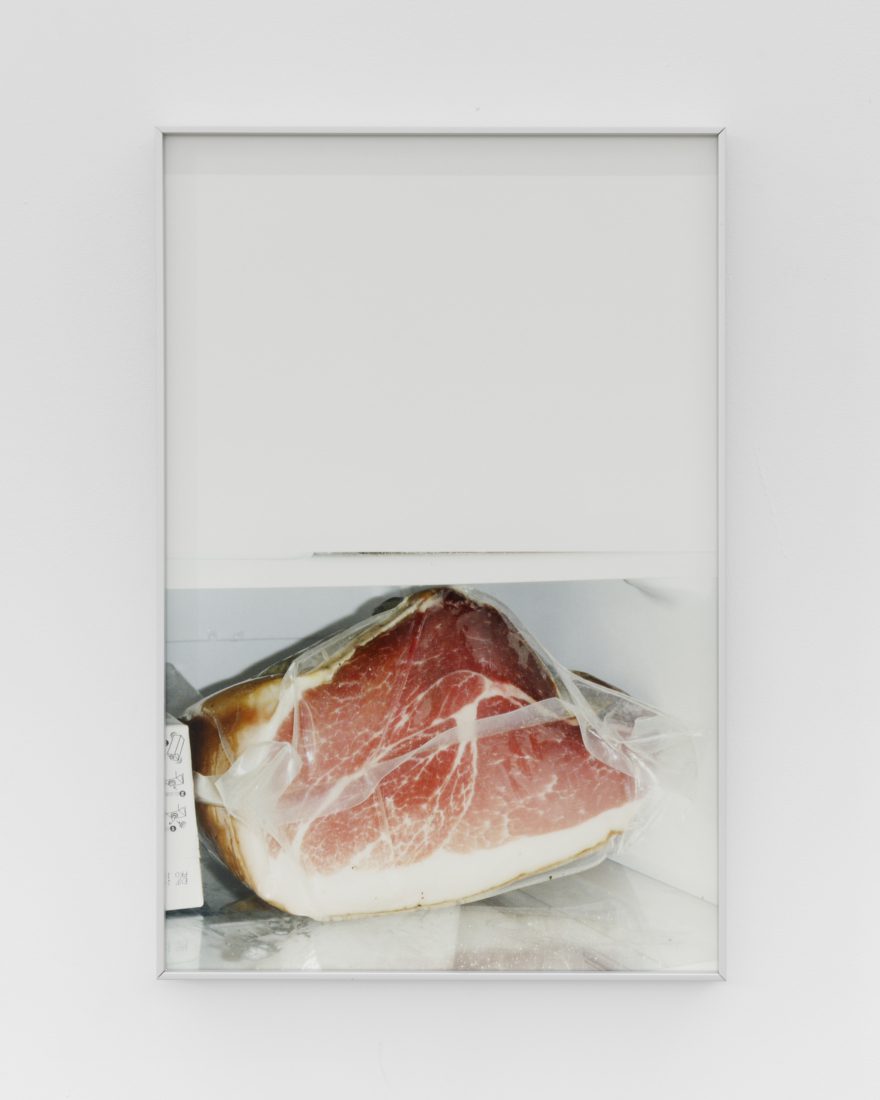The Soft Animal of the Day
Hella Gerlach + Cristina Stolhe
[05/07/24 - 27/07/24]
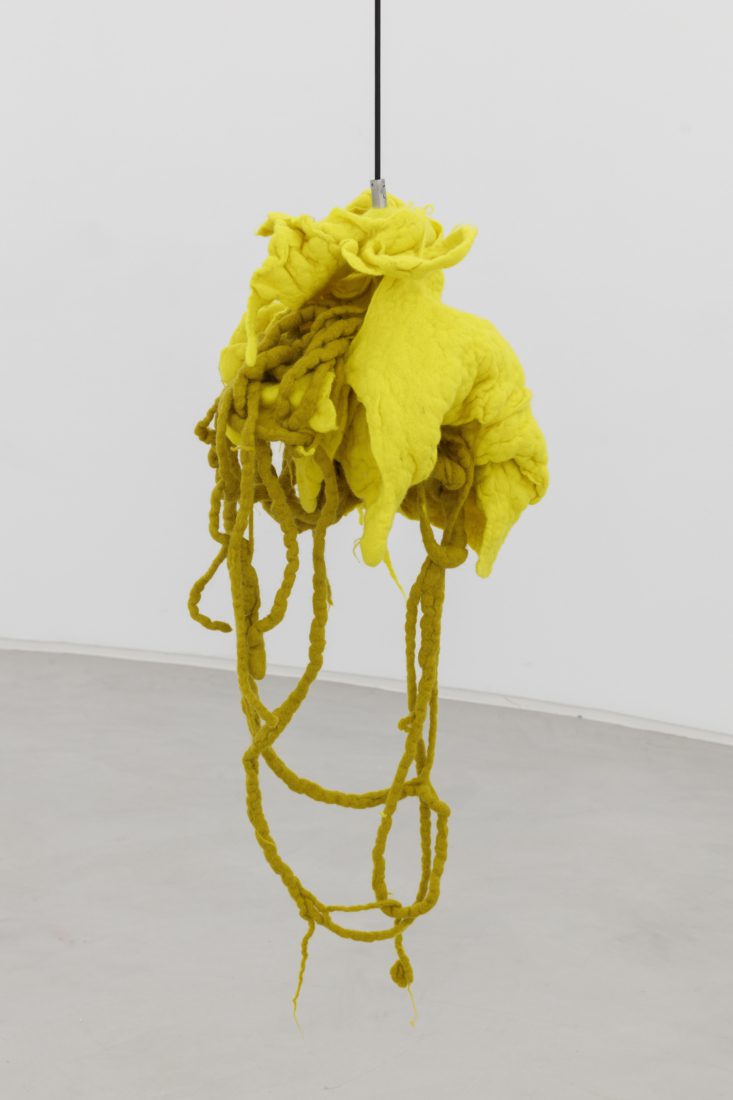
Inside-out #7 Pendulum Twins (cerebella), 2024 | Hella Gerlach
Wool, aluminium, steel, robotic joint, plastic, computing unit with wifi, two smart servo motors,power supply, cable, rubber cord
Variable Dimensions
Sometimes, on certain days, people gather to share themselves freely, like birds, and without force. They also speak, but their language is ambiguated by sonic rays of silence and cloaked memory that entitles them to gesture and touch. Their non-verbal cues are understood. There is also a slight breeze. There is perfume. It reminds them of something but they cannot place the smell. They day continues, slowly and heavily like summer. The sun pours down upon their heads, and they are almost lost in the heat. A meal is served. The table is left a mess and no one minds. Clothes are added and taken away from bodies. The form and function of things blurs, reverses, and resets. Across the screens of their hearts, images materialise and disappear like waves. They belong to themselves and each other.
The horizon is close, as close to walk on, but instead the ocean defends the sky, and they watch, calmly, generously, as the bright clouds shift their positions. Still, it is unclear who has written the script for this unfolding of signifiers. It is all very clean, nostalgic, rough, smooth, and personal. Someone sees a shadow, someone sees a chest and shoulder resting on a bed, someone
hears a whirring of a small engine moving across the land. Glimpses. Bravado. Softness. It is not dangerous to trust the world. They all know that.
Looking into the photographs of Cristina Stolhe, something very intimate and also frontal is proposed. Almost like breathing according to different temperatures, her works name things that need naming and also leave things unnamed which should not be pronounced. It makes sense, subliminally, that we see these images, they takes us places, back into ourselves and out again into the wind. Protagonists are forgotten. New protagonists are greeted. No one and nothing stays locked in time, but there is a notable progression through space. Poetic is not the right word. Whimsical neither. Honest. These works are honest. Gentle. They are also gentle.
When the body is closed, certain things are possible. One’s guard is up, one cannot be accessed. When the body is open, intimacy becomes possible. This is the process that Hella Gerlach engages in as she crafts bodies in textile, and unlocks them into their environments. Here something very foreign and also very human is encountered. Don’t we all want very much to be seen from the inside? And yet at the same time, want to hide? Isn’t this the paradox of being also not totally aware of who we are, even if we try to compartmentalise ourselves, are we not still slightly allergic to disgresion? Speaking to these exposures and closures, Gerlach’s sculptures also pulse, shift, and make sound. They live, aware, and in full colour.
Together, Stolhe and Gerlach take us into shaping our embodiment, memory, and desire. Nothing here is projected. The day moves, softly, as an animal.
July 2024, Josseline Black
Biography:
Cristina Stolhe’s work analyzes the experience of everyday life through the photographic tool. Using analog, digital and mainly her mobile camera, her work explores the raw essence of life while creating a “more than meets the eye” game, infusing images with emotions that may not seem apparent. Stolhe’s scenes elicit a sense of nostalgia, a familiar feeling, yet expose the intimacy of the moment through a voyeur lens, attempting to treasure the instant and make it everlasting. In a way, she invites us to consider how our individual experiences and memories shape our lives and identities. However, the act of photographing is nothing but an impulse, a need expressed in what we understand by photographs, translated into an infinite album where the artist also assesses what photography is, regardless of the medium. In 2018 the publishing house Terranova launched her first book Random Pictures Book, presented as an ode to mobile photography, in which she explores the over consumption of images nowadays.
Hella Gerlach‘s sculptural work is deeply intertwined with the living tapestry of human relationships, apparatuses, and environments. Her sculptures, often crafted from wood, ceramic, and textile serve as receptive connectors propelling movement, mediating between the body of the viewer (or user, since they sometimes ask to be touched), the object, and exhibition space. They offer a tactile bridge that playfully aim to open up the physical body to mutations and dialogue. At the core of her practice lies a transformative examination of the body, both physical and emotional, through its vulnerable connection to other bodies, society, and technology. Gerlach’s current work deepens her examination of the sense and concept of touch. Some of these hanging pieces, felted woolen bodies, are connected to a senso-motoric device which make them vibrate, shake, or spasm. Like furry and vulnerable nervous systems, these bodies engage a process-oriented inquiry of movement, touch, and play. This new body of objects is currently morphing into a laboratory for interactive sculptures, which grows with humans and their milieux.

